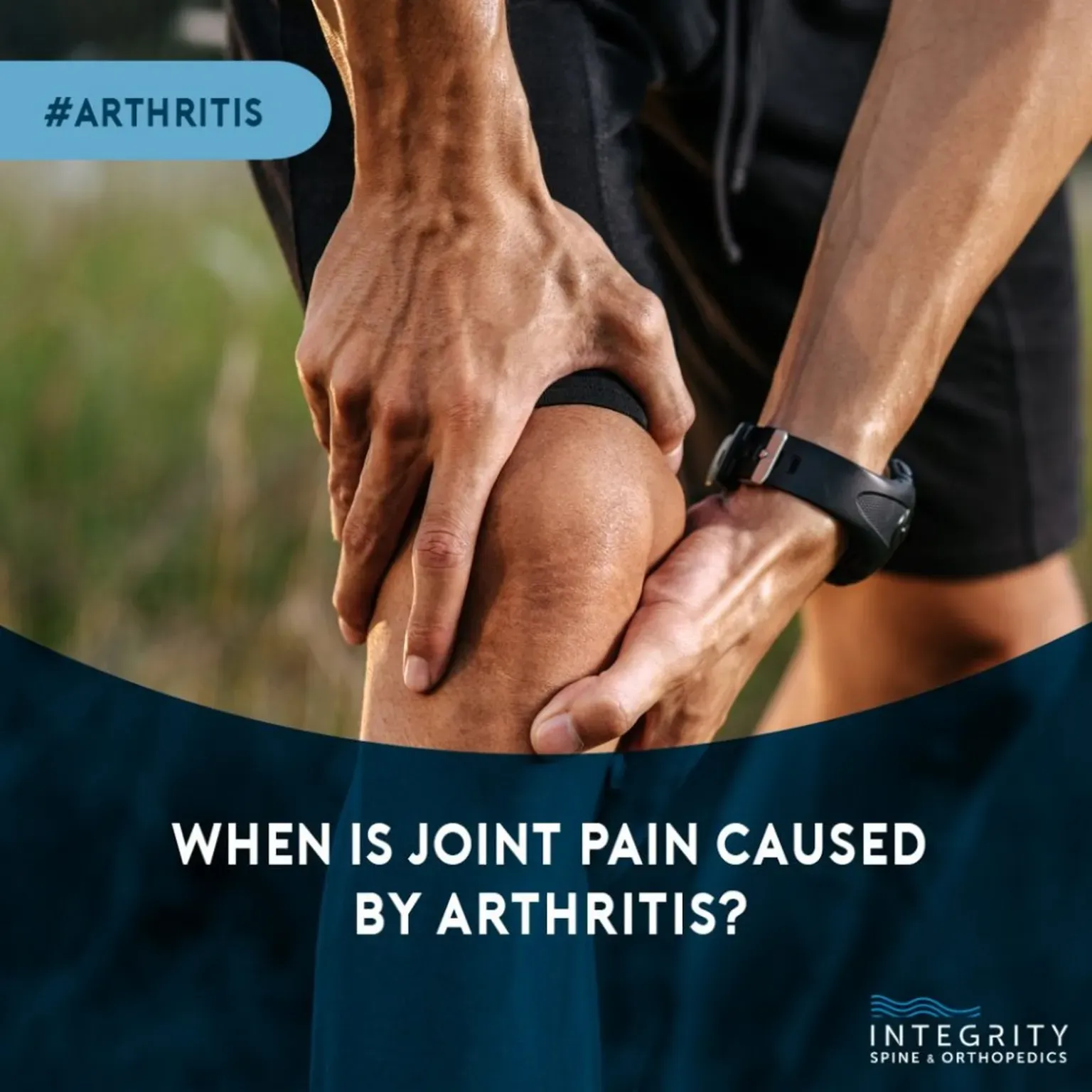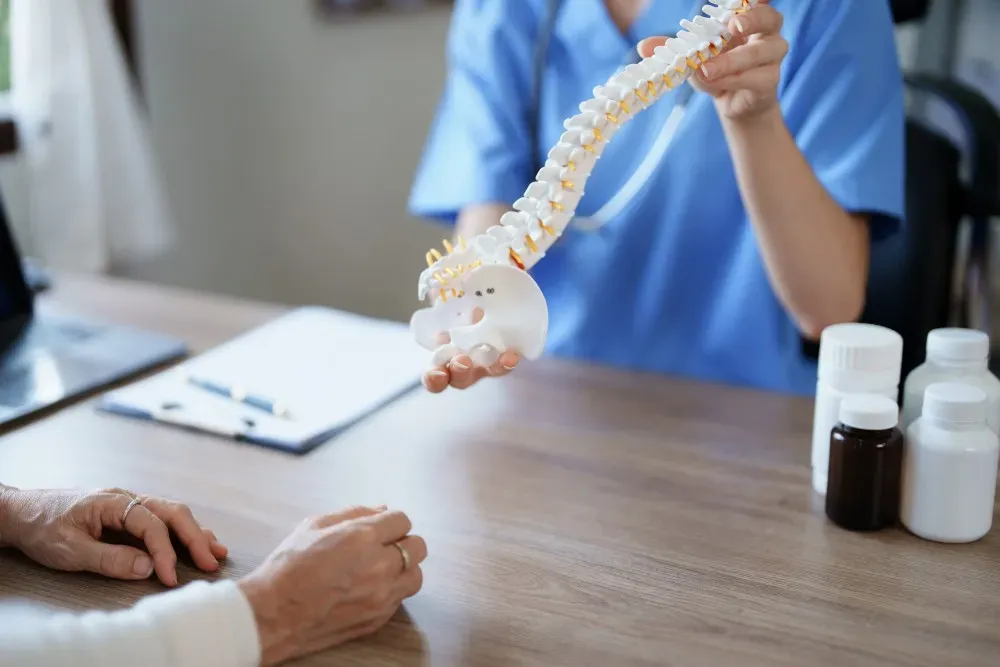Neurosurgery & Orthopedic Surgeons in Jacksonville

When is Joint Pain Caused by Arthritis
Occasional joint pain is common, especially if you play sports or live a very active lifestyle. A creak in your knee, a twinge in your shoulder, a dull ache in your hands some mornings — you may chalk these pains as a normal part of getting older.
Occasional joint pain is common, especially if you play sports or live a very active lifestyle. A creak in your knee, a twinge in your shoulder, a dull ache in your hands some mornings — you may chalk these pains as a normal part of getting older. But what about creaks, twinges, and aches that linger, worsen, and start affecting your daily life?
Contrary to popular belief, joint pain is not a normal sign of aging. And if you’re living with sore, achy joints, it’s time to talk to your doctor about arthritis, the most common cause of long-term joint pain.
WHAT IS ARTHRITIS?
Arthritis isn’t a single disease. It’s a catch-all term that refers to joint inflammation, pain or disease. Today, doctors recognize over 100 different forms of arthritis. According to the Arthritis Foundation, more than 50 million adults and 300,000 children have a type of arthritis and it’s a leading cause of disability in the United States. Women and older adults are more likely to develop joint disease.
Osteoarthritis is the most common form of arthritis. It’s a degenerative disease that develops when cartilage covering the joint surfaces begins wearing away. Over time, osteoarthritis causes painful bone-on-bone friction as the cartilage erodes completely. The disease also damages the underlying bone and soft tissues that protect and support the joint. Age, normal wear and tear, repetitive stress, past joint injuries, obesity, and genetics are the primary risk factors for developing osteoarthritis.
Rheumatoid arthritis is the second most common form of arthritis. It’s an inflammatory disease that develops when the body’s immune system mistakenly attacks its own tissues. Rheumatoid arthritis causes painful inflammation and swelling in joint linings. Over time, the disease also damages the underlying bone, cartilage and soft tissues of the joint, and sometimes causes joint deformity. Age, a family history, smoking and obesity are the primary risk factors for developing arthritis.
Other types of arthritis include psoriatic arthritis, ankylosing spondylitis, gout, infectious arthritis, and juvenile idiopathic arthritis.
EARLY SIGNS AND SYMPTOMS OF ARTHRITIS
There are multiple injuries and conditions that can cause joint pain. But the following signs may indicate that you have an early stage of arthritis. Learn more about the warning signs for the two most common types of arthritis: osteoarthritis (OA) and rheumatoid arthritis (RA).
OSTEOARTHRITIS
Osteoarthritis usually begins slowly and progresses over time. It most commonly affects the hands, neck, hips, knees, low back/spine, and feet. Early symptoms include:
- Pain. Arthritis pain can range in intensity from mild to severe. It can remain constant as a dull ache or come and go. If pain comes and goes, it may be worse with movement and activity and relieved with rest. As osteoarthritis progresses, the pain may become more severe and lasting.
- Stiffness. Stiffness is another common sign of arthritis, especially first thing in the morning and after long periods of sitting or inactivity. Morning stiffness can last anywhere from a few minutes to an hour.
- Swelling. Joint swelling, tenderness and warmth are indicative of arthritis. If you have swelling that lasts for several days or that occurs frequently throughout the month, it’s time to see your doctor for an arthritis evaluation.
- Loss of movement. If you have arthritis, you may experience difficulty climbing stairs, standing up from a chair and getting into and out of a car. You might notice that you can’t easily move the joint through its full range of motion anymore.
- Grating sounds. Some people with osteoarthritis experience crunching, grating, or bone-on-bone noises in the joint during movement.
- Bone spurs. Osteoarthritis can cause the formation of bone spurs around affected joints. Bone spurs look and feel like hard bumps under the skin.
RHEUMATOID ARTHRITIS
Like osteoarthritis, rheumatoid arthritis usually begins slowly and progresses over time. RA typically starts in the small joints of the fingers and toes and spreads to other joints as the disease progresses. One common sign of RA is symptoms that affect the same joint on both sides of the body.
RA symptoms include many of the ones listed above — joint pain, morning stiffness, swelling, warmth and tenderness, and loss of joint movement. Symptoms like pain and swelling can range in intensity from mild to severe and may come and go in cycles of flare-ups and remissions.
With rheumatoid arthritis, joint symptoms might be accompanied by:
- Fatigue
- Fever
- Loss of appetite
Rheumatoid arthritis is a systemic disease, meaning that it can cause inflammation and symptoms in non-joint structures, including the eyes, lungs, heart, kidneys, skin and other organs.
WHEN TO SEE YOUR DOCTOR
It’s time to see your doctor if you have any of the symptoms listed above that don’t resolve within a few days or weeks. Arthritis is not curable, but it’s entirely manageable. Early diagnosis and aggressive treatment can help reduce pain and symptoms, preserve joint function and slow the progression of joint damage. Without management, the pain, stiffness and damage caused by arthritis can become disabling.
A conservative treatment plan includes medications, injections, physical therapy and assistive devices to help you move more easily. Your doctor might also recommend some lifestyle changes that can help with pain and symptom management — exercising, stretching and maintaining a healthy weight can reduce pressure on arthritic joints and preserve function. If conservative treatments aren’t effective, or if joint damage becomes too severe, a joint replacement surgery is a viable option to reduce pain and restore mobility.
Don’t put off seeing your doctor if you’re living with pain that’s affecting your daily life. With an accurate diagnosis and personalized treatment plan, you can live an active, healthy lifestyle for years to come.
INTEGRITY SPINE AND ORTHOPEDICS TREATS SPINE AND JOINT PAIN
Whether you’re suffering from an acute injury or chronic pain, Integrity Spine and Orthopedics has the orthopedic care, pain management, sports medicine, and surgery services to help you to get back on your feet and back to doing the activities you love. Our board-certified and fellowship-trained surgeons specialize in providing minimally invasive, comprehensive care for a range of orthopedic and spine conditions.
We have a convenient clinic located in Jacksonville, FL. Please call us or reach out online to schedule your first appointment.




